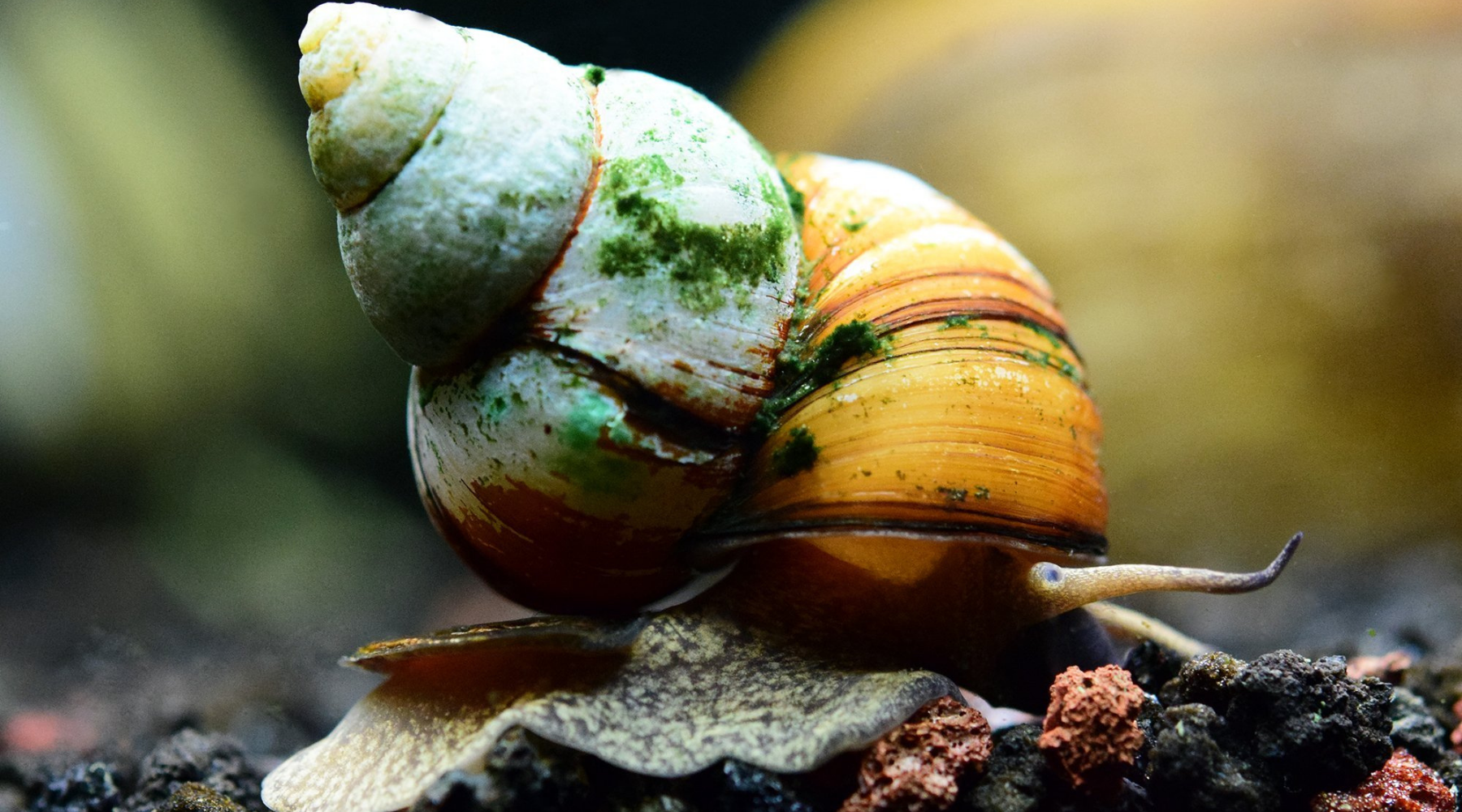Trapdoor Snails Keep Pond Water Clean
Loving pond owners know that the primary goal of your pond is to maintain a clean environment and protect and sustain a healthy ecosystem
Trapdoor snails are great for a pond's ecosystem. They clean out the pond, remove trash, eat organic leftovers and scrub the bottom.
Smith Creek Fish Farm supplies trapdoor snails for algae control in your pond.

About Trapdoor Snails
The Japanese Trapdoor Snails (scientific name Viviparus Malleattus) are originally from Asia, specifically China, Japan, Myanmar, Burma, and Thailand. They can be found almost anywhere now. The Japanese Trapdoor Snails may be an aquatic hobby name.
The Japanese Trapdoor Snails, are livebearers! In fact, their gestation period is 9 months. They have a black, grey or tan shell, and sometimes, an aqua one.
These snails were brought to San Francisco by a fish market in the late 1800s. They were then sold as food. They were then introduced to San Francisco Bay where they are still found today.
Their natural habitats include streams and ponds with slow currents. Because they can get lots of nutrition from the algae and plant debris, they are as happy as clams in mud.
They are considered to be an invasive species in certain areas, but they are loved by owners for their ability to clean ponds and remove algae. This helps improve water quality for the other inhabitants.
Benefits
Japanese Trapdoor Snails are great for cleaning outdoor ponds. They can consume all of your algae and can even withstand cold temperatures if they are kept in colder climates.
The pond snails will go around your pond's edges and eat any algae that is on the bottom, rocks, or sides. Trapdoor snails can also be friendly to plants. They will clean out the stems and leaves of the plant without damaging it. They will only eat plants that are already decayed.
Some pond snails may not be able to consume as much algae as Trapdoor snails. This is where the Trapdoor snails are the most effective algae eaters.
Trapdoor snails are also careful about grazing the algae of plants. Many Trapdoor snails are found in ponds. They do not harm plants, but merely scavenge along the edges and stems of plants while actively eating decaying ones.
What size are they? How many do I need?
Japanese Trapdoor Snails measure in at around 2 inches. The care they receive and how they were raised will determine how big they get.
Trapdoor snails are live-bearing, but they only reproduce a few times per year. This means that you don't need to worry about them taking over your pond like other nuisance eggs-bearing snails. You won't have egg clusters in your pond. These little snails will soon hatch and be ready to eat anything that crosses their path.
Your trapdoor snails must have at least 10 snails per 50 square feet to have an effect on algal growth. For a farm pond to have an effect, it will need at least 200 snails to eat algae per acre. Only June through September is the time to purchase algae-eliminating snails. Smith Creek Fish Farm has trapdoor snails that can be used to remove algae from your pond. You even get free shipping.
Things To Consider
While Trapdoor snails may seem like the best cleaning tool for your ponds, there are some things that they don't like. Here are some things to keep in mind:
- They don't eat fish waste.
- The pond scum is a mixture of brown algae and other waste that they will not eat.
- They also make their own waste. It is important to monitor the number of snails in your pond.
-
Some states consider Japanese Trapdoor Snails an invasive species. They are not allowed to be kept as pets or in captivity. Before purchasing Japanese Trapdoor Snails, you should verify the local regulations.

